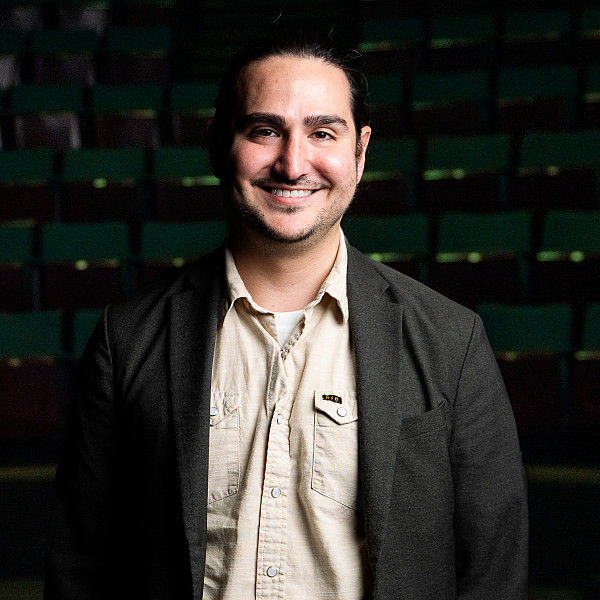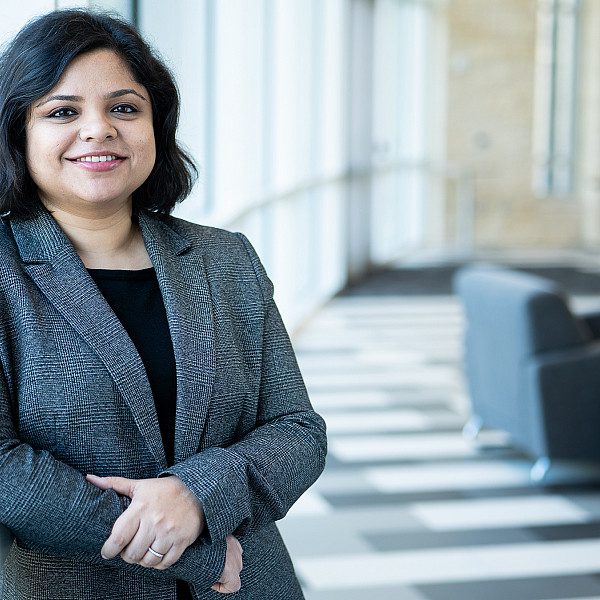News
Meet Our World-Class Faculty: Soojung Han
A conversation with the new Assistant Professor of History Soojung Han.
March 08, 2023
March 08, 2023
Open gallery

Please introduce yourself, and tell me a bit about your background.
My name is Sooji Han. I am an assistant professor of East Asian history in the history department at Southwestern University. I specialize in medieval Chinese and Inner Asian history, focusing on ethnic, identity, and gender studies. Broadly, much of my research approaches history from a transregional perspective, placing China within an interconnected Asia. Before coming to Southwestern, I completed my doctoral degree at Princeton University, and before that, I completed my bachelor’s degree and master’s degree at Seoul National University in South Korea.
Did you come to the US for the first time when you started attending Princeton?
I lived in Iowa for a year when I was ten years old. My dad, who is also a scholar, came to America as a visiting professor, allowing my sister and me to learn English during his stay here.
What was the experience like moving from South Korea to Iowa?
I grew up in a metropolitan city near Seoul, which is drastically different from Iowa. I have many amazing memories of Iowa and made lifelong friends with whom I’m still in contact today. I am particularly grateful for my stay in Iowa, which sparked my interest in diverse cultural identities and perspectives. In Korea, I had always been categorized and always viewed myself as a Korean. However, after I came to the States, I was initially confused as I was broadly categorized as an Asian, with many people not aware of the diverse cultures and ethnicities in Asia. This does not come as a surprise, as several people saw my family as the first Asian family they had met. Experiences such as my stay in Iowa help drive my passion for ethnic and identity studies while also propelling my research on the convergence of diverse cultures.
How did you hear about Southwestern, and why did you want to work here?
It was a combination of various factors. I was very interested in teaching at a liberal arts college because I wanted to be able to communicate with students very closely. A few years back, good friends of mine moved to the Austin area, and they talked about all the great things happening here. That’s when I started to search for universities and colleges around the area. I kept my eye on Southwestern from then on, and luckily last year, a position opened up, and the rest is history.
How have you enjoyed your time at Southwestern thus far?
I have really enjoyed my time at Southwestern. My colleagues in my department and other faculty members and staff have been amazing. They have been very helpful and supportive from the beginning of my time at Southwestern until now. Southwestern has also been a great place to develop my teaching and research. On top of that, I love the students here. They are intelligent and very engaging. I look forward to going to my classroom every day to teach students. Teaching bright students is a very joyous moment for a teacher.
What are you currently researching?
I’m working on a book project about the Shatuo Turks, a minority group from Inner Asia. While dominant scholarship focuses on the Tang dynasty that came before and the Song dynasty that came after, I bring attention to the Five Dynasties and Ten Kingdoms period in the tenth century. In this search, I’ve found that the Shatuo Turks were crucial to the transregional political happenings of the time. Migrating from western Inner Asia to Tang China, they eventually became rulers of multiple states in China during the tenth century. I talk about their ethnicity and identity and how they contributed to a watershed in diplomatic practices in Chinese history.
What classes do you teach?
This semester, one of the classes that I am teaching is Silk Roads in world history. I discuss various worldwide connections throughout history and use the Silk Road as a methodology. The term, Silk Road, was first coined in the 19th century to describe the transregional exchange of materials, ideas, and cultures spanning from Europe to Asia. I’m also teaching a seminar on the Nomadic Empires, so-called “Barbarians.” Nomadic people were often branded as barbarians from the perspective of their sedentary neighbors. In the class, I talk about the history of minority groups from their perspectives and from the perspectives of others.
Do you have a favorite period of history that is your favorite to teach students, and why?
Because I specialize in medieval history, I love to teach students about the medieval period. My favorite periods are the Northern and Southern dynasties period in the fifth and sixth centuries and the Five Dynasties and Ten Kingdoms period in the tenth century. Considered two of the most chaotic periods in Chinese history, these periods oversaw the hectic convergence of various cultures. I enjoy teaching students how various cultures interacted with one another, contributing to periods of extraordinary multiculturalism.
What are you looking forward to teaching in the coming semesters?
In the coming semesters, I plan to teach a seminar tentatively named Docile or Deviant. It is a gender history course. In pre-modern Chinese society, women were categorized as either subservient or deviant if they were powerful. I aim to break these portrayals and stereotypes of women in Chinese history. Another class that I’m thinking of teaching is Diplomacy in East Asia. In that class, I plan to delve into the various strategies deployed by East Asian countries from the pre-modern period to the modern period, such as intermarriages, treaties, and covenants. This class will also give students historical context to the many political disputes in Asia that continue today.
If a student were interested in learning more about East Asian medieval history or the medieval period in general, what resource would you guide them to?
There’s a podcast called Medievalists. I was honored to have been featured on it last year. It’s very helpful, and as a medievalist, I listen to the podcast all the time. It’s not just for experts but also the general public. I recommend students listen to the podcast to gain cursory knowledge, which might prompt them to be more interested in studying the medieval period.
What do you enjoy doing outside of work?
I love to walk my dog; his name is Bonbon. I like to listen to music, classical music specifically. And these days, I practice East Asian divination.
What does East Asian divination entail?
It’s based on the Chinese astrological concept that one’s fate or destiny is defined by Sexagenary cycle characters assigned to one’s birth year, month, day, and hour. And that way, you can see one’s characteristics, traits, and future. This is very popular in many East Asian countries, including Korea, Taiwan, China, and Japan.
What is something that students would be surprised to learn about you?
Even though I specialize in Chinese history, I am Korean. I think, generally speaking, in America, people of Asian descent are typically categorized under the umbrella term Asian. Asians have various ethnicities, identities, and cultures, and that’s something that I always emphasize in my class. Various ethnicities and identities should be acknowledged, appreciated, and celebrated.
If you could meet any historical figure, dead or alive, who would it be and why?
I would like to meet Lou Zhaojun, a female politician from the Northern and Southern Dynasties period in sixth-century China. She became an empress dowager of the Northern Qi dynasty. She had a nomadic background and chose her own husband, unlike other women at the time. Although her husband was a mere soldier, with her support, she made him the de facto ruler of the dynasty prior to Northern Qi. Following her husband’s death, she installed four of her sons as emperors of the newly established Northern Qi dynasty. People consider her a villain of the pre-modern period, but I see her as a kingmaker and a female politician who contributed to the making of the Northern Qi state identity. She is currently the focus of one of my research papers.
How did you become interested in history?
I became interested in history when I was around ten years old. As a teenager, I went to a local library with my dad and had the chance to read a lot of history books. That’s when I started to learn about the many different perspectives stemming from the same event. For example, the sole female emperor in Chinese history is portrayed by some historians as a villain, while other historians consider her a gracious and amazing ruler. When I started looking for historical instances of such starkly contrasting perspectives, I found that historians of these differing perspectives used the same sources to further their arguments. I was fascinated by how historians used such sources to craft their version of history. Historians are storytellers who weave the most plausible historical story from extant sources. I enjoy the intricacies and creativity of the craft, and I hope the students in my class also enjoy discussing various historical moments from multiple perspectives using primary sources and logical thought processes.
Help support our world-class faculty like Sooji by making a gift to Southwestern.


















